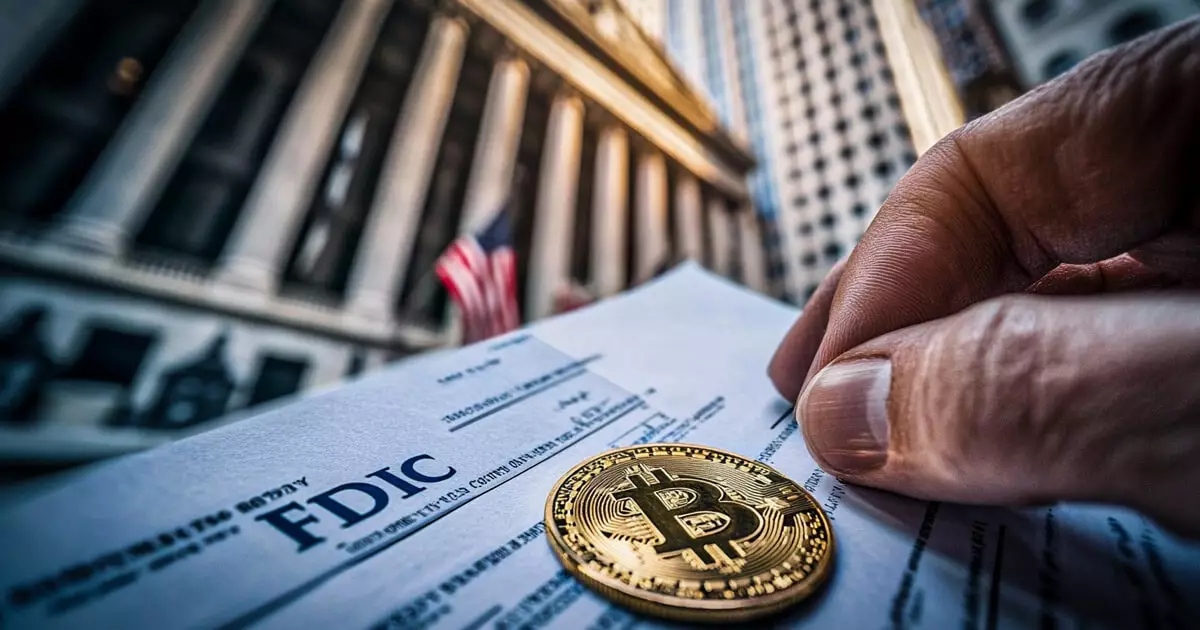On March 28, the Federal Deposit Insurance Corporation (FDIC) made a dramatic policy shift by publishing new guidance that permits banks it supervises to engage in cryptocurrencies without obtaining prior approval. Unlike previous guidelines that created barriers, the FDIC’s Financial Institution Letter (FIL-7-2025) signals a turning point in the agency’s approach to fintech innovation. Rhetorically, the statement from Acting Chairman Travis Hill, who noted that the FDIC was “turning the page on the flawed approach of the past three years,” reflects a welcome departure from a restrictive regulatory environment.
This change may indeed be one of the pivotal moments in American financial regulation, as it realigns the FDIC more closely with the entrepreneurial spirit of the blockchain revolution. By encouraging banks to explore crypto-related activities while also emphasizing the importance of safety and soundness standards, the FDIC is articulating a vision of a regulatory environment that fosters rather than fetters innovation.
Breaking Down the Barriers to Innovation
The prior FDIC framework inhibited banks from pursuing promising digital asset services, essentially imposing an unofficial moratorium on crypto-related activities. This sparked accusations of an “Operation Chokepoint 2.0,” an alleged crusade led by the previous administration to mute the burgeoning crypto sector. It appears that this “stifling strategy” aimed to control and limit the rapid growth of digital currencies—a reflection of fear and skepticism towards innovative financial technologies.
Critics contend that the vague, ad hoc interventions the FDIC utilized left banks uncertain and hesitant to venture into the cryptocurrency landscape. The new guidelines represent not just a removal of old restrictions but also an opportunity to rethink the narrative around digital finance in an era where Bitcoin and blockchain solutions are rapidly altering the investment landscape. Supporters of the eggshell-thin crypto ecosystem see this normalization as an essential catalyst for further industry growth—as it finally creates the flexibility banks need to innovate.
A Call for Transparency and a New Cooperative Framework
One of the critical shortcomings of the former policy was its opacity; banks received “pause” letters without formal rulemaking, leaving many in the dark about regulatory expectations. An essential component of the FDIC’s new guidance is its collaborative nature. As Hill indicated, the agency intends to work closely with the President’s Working Group on Financial Markets to draft additional guidelines, signaling a shift towards transparency and dialog with industry stakeholders.
This collaborative inclination marks a significant improvement. By inviting input from banks and fintech entrepreneurs, regulators can build frameworks that finally align with the realities of modern finance. The demand from lawmakers and industry leaders for clear, consistent guidelines is now being met with an appetite for reform within the FDIC.
Addressing the Bank Secrecy Act: A Step Forward
One notable aspect of the FDIC’s recent shifts is the emphasis placed on re-evaluating the implementation of the Bank Secrecy Act (BSA). Hill emphasized in his remarks that compliance should not serve as an excuse to deny banks and their clients access to growth opportunities, such as tokenized deposit services. Such a stance represents a pivotal acknowledgment that while vigilance is necessary, excessive caution can hinder innovation.
As banking increasingly integrates digital asset ecosystems, regulators must remain vigilant but not risk losing out on the opportunity for growth. Enabling banks to confidently navigate compliance issues related to digital assets could lead to a more robust framework for innovation.
Aligning with Other Regulatory Bodies
The FDIC’s recent guidance not only marks a progressive step within its own agency, but also aligns it with other regulatory bodies like the U.S. Securities and Exchange Commission (SEC). This convergence of approaches allows for a more uniform regulatory landscape, which is critical for an industry as interconnected as cryptocurrency.
As regulators seek to formalize crypto guidelines, a consistent narrative across agencies is essential in fostering a trusted environment for all stakeholders involved in digital assets. Such alignment can also reduce the burdens that have encumbered banks and tech companies alike, putting American financial institutions on a level playing field with their international counterparts.
While the FDIC’s new guidance represents a beacon of hope, it simultaneously presents a challenge: to ensure that this newfound freedom for banks to engage with cryptocurrency is harnessed effectively, leading to a burgeoning industry that promotes both innovation and competitive fairness.













